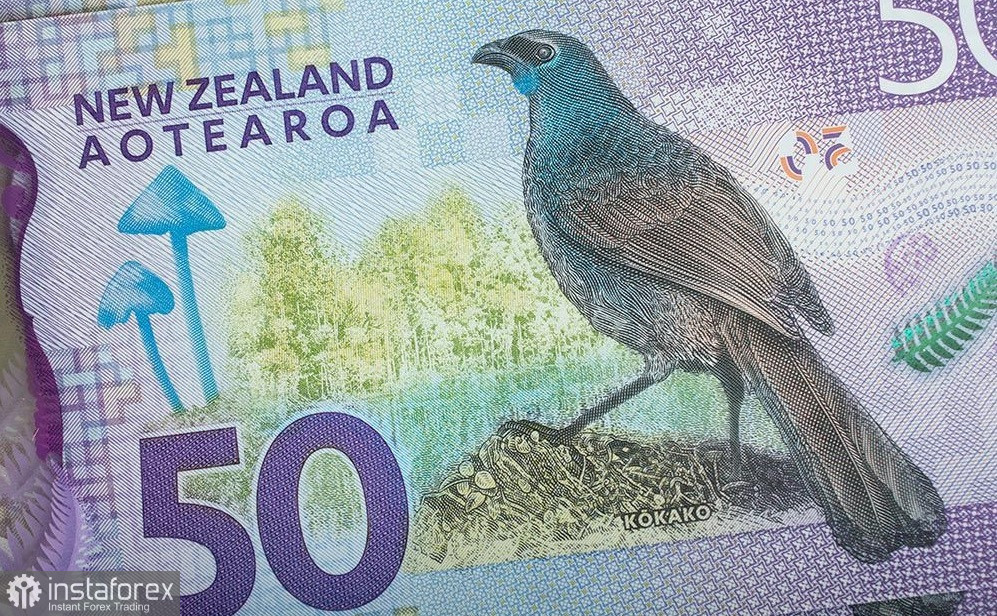Tomorrow, during the Asian session on Wednesday, the Reserve Bank of New Zealand will hold its next meeting. The outcome of the August meeting is not predetermined, even though the baseline scenario suggests that the interest rate will remain at its current level of 5.50%. According to some experts, the RBNZ may begin lowering the interest rate this month, given the slowdown in inflation and the rise in unemployment.
It should be noted that the Reserve Bank of New Zealand kept the key rate unchanged following its previous meeting in July. In the accompanying statement, the central bank indicated that inflation is likely to return to the target range of 1%-3% by the second half of 2024. Just a week after the July meeting, key inflation growth data for New Zealand was published, confirming the downward trend and fueling rumors that the RBNZ might begin easing monetary policy at the next meeting.

According to the published data, the Consumer Price Index (CPI) grew by 0.4% in the second quarter on a quarterly basis, compared to the forecasted growth of 0.5% (the previous value was 0.6%). On an annual basis, the index also fell into the red zone, significantly slowing from 4.0% to 3.3%. This represents the weakest growth rate since the first quarter of 2021. It is also worth noting that the index has shown a downward trend for six consecutive quarters, approaching the central bank's target range of 1%-3% for the first time in three years.
This is perhaps the primary rationale for lowering the interest rate. It's important to note that the RBNZ significantly softened its tone in its July meeting compared to the one in May. In May, the regulator discussed the possibility of further tightening monetary policy while ruling out a rate cut in the near future. At that time, central bank members indicated that a rate cut was unlikely before the third quarter of 2025. However, in July, the central bank did not threaten further monetary tightening, stating that the current monetary policy was working successfully and achieving its goals. The accompanying statement included a rather soft phrase that "restrictive monetary policy has significantly reduced consumer price inflation."
It should be emphasized that the New Zealand regulator softened its tone even before the release of the CPI growth data for the second quarter, which showed a slowdown in inflation from 4.0% to 3.3%. In other words, the upper limit of the target range is now within close reach (1.0%-3.0%).
Additionally, at the beginning of August, the Reserve Bank published a survey on monetary conditions, indicating that inflation expectations in New Zealand continue to decline – both on a 12-month and a 2-year basis. Specifically, two-year inflation expectations fell to 2.03% in the third quarter (down from the previous value of 2.33%).
Given this context, a rate cut at the August meeting cannot be ruled out.
According to currency strategists at UBS, there is currently a 70% probability that the RBNZ will begin easing policy this month.
Overall, the markets now estimate the likelihood of a rate cut in August at 40-45%.
However, experts at UOB Group believe that the Reserve Bank will only prepare the ground for policy easing at the August meeting, with the first rate cut expected in the fourth quarter of this year. Analysts point to slowing inflation, weakening conditions in the services and manufacturing sectors, and declining business confidence.
Thus, there is a fairly high probability of a "dovish" scenario following the August RBNZ meeting. Communication with market participants has not been the Reserve Bank of New Zealand's strong suit, to say the least, so the central bank may skip the "preparation" stage and proceed directly to easing monetary policy. Especially since this is supported by slowing inflation, rising unemployment (which has been increasing for five consecutive quarters and reached 4.6% in the second quarter), and weak economic growth (New Zealand's GDP grew by just 0.2% in the first quarter).
In my opinion, the Reserve Bank is likely to take the first step towards easing policy tomorrow. Given the 40% probability of this scenario, the NZD/USD pair could come under significant pressure in this case.
From a technical standpoint, the pair has been demonstrating an upward trend for the third consecutive week (primarily due to the weakening of the U.S. dollar). On the daily chart, NZD/USD is between the middle and upper lines of the Bollinger Bands indicator, above the Tenkan-sen and Kijun-sen lines, but within the Kumo cloud. If the RBNZ implements the baseline scenario, the pair will continue drifting towards the upper boundary of the cloud, around 0.6110. If the "dovish" scenario is realized, expect an impulsive decline to the middle line of the Bollinger Bands indicator on D1 (0.5950) and a further drop to the base of the 0.59 figure. The uncertainty remains, so it's best not to rush into trading decisions on the pair.





















